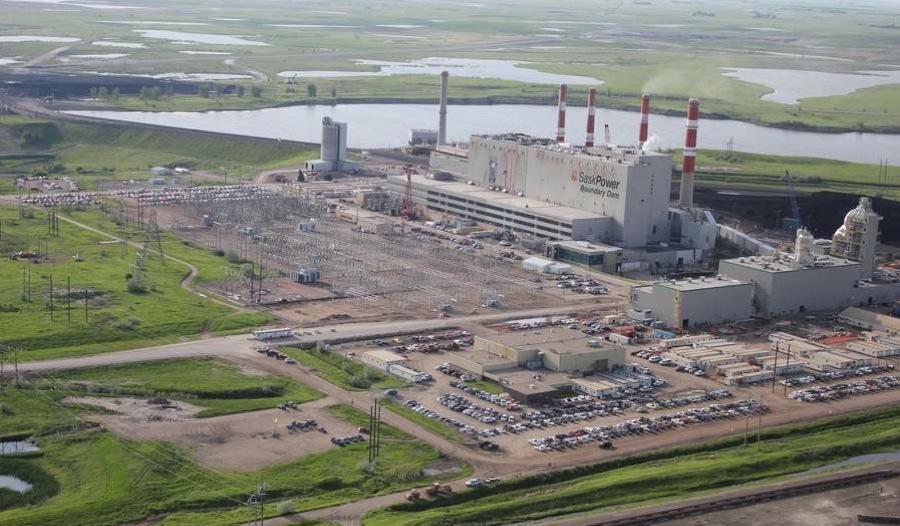Is clean coal an option for India?

In spite of the Indian government’s international commitments to clipping greenhouse gas emissions (driven home by the country’s ratification of the Paris climate agreement earlier this month), coal will still, for the foreseeable future, occupy a dominant place in the country’s energy mix. Whereas the average country generated 39 percent of its power by burning coal in 2014, Indian coal was responsible for a full 72 percent–rivalling the world’s largest coal consumer, China, in proportion if not in volume. India thus finds itself caught in a dilemma: where environmental responsibility calls for greener energy sources, economic development seems to mandate exploiting fossil fuels.
To strike that balance, India can seek a transitional alternative to support a clean growth path until renewables such as wind, solar, and hydropower become economically competitive. One potential option is to develop carbon capture and geological storage (CCS) technology that minimizes the negative impact of coal.
In theory, CCS can trap and store up to 90 percent of carbon dioxide emissions from electricity generation and industrial processes in selected geological reservoirs such as depleted oil and gas fields and unmineable coal seams. CCS consists of three steps: capturing the carbon dioxide, transporting it, and storing or utilizing it securely. Each of these stages can be carried out through different systems, and carbon capture can be realized either before or after combustion.
Critics mainly dismiss CCS’s viability on economic grounds. It is expensive to retrofit the technology on existing plants, while new plants with built-in CCS capacities require multi-billion-dollar investments. For instance, Canada’s SaskPower (the world’s first large-scale power plant equipped with CCS) cost $1.5 billion to build.
In India’s case, however, the accumulated benefits of implementing CCS at a large scale, given careful planning and prudent execution, could outweigh the one-time cost. After all, both economic necessities and political will are pulling India toward the development trajectory of every other industrial nation in the world: one powered by dirty fossil fuels.
When Hindu nationalist Narendra Modi took office as prime minister in 2014, he promised economic reforms to stimulate growth and redistribute wealth among all Indians, coining the phrase “shining India”. India has overtaken China as the world’s fastest growing economy since late 2014, entailing urbanization, manufacturing growth, and infrastructural support that demands a consistent supply of energy. The International Energy Agency (IEA) estimates that nearly half of India’s new power generation demand will be fulfilled by coal-fired plants by 2040, with the remaining half satisfied by renewables.
That, however, is an optimistic assessment of India’s green evolution. To meet the goal of a balanced energy matrix, the country must build up some 340 GW of new wind and solar projects (or a 40 percent share in the power sector) by 2030. Modi vows to increase renewables capacity to 175 GW by 2022, and the Indian central government pledges 40.5 billion rupees ($649 million) of government funding to support renewable development while upgrading 100 GW in solar capacity. The latter, however, means trillions of rupees of investment, while corruption and inefficiency in the utility sector further add to the uncertainty surrounding renewables.
As it stands, at least 300 million Indians (about 20 percent of the total population) have no access to electricity at all. In regions reached by power grids, delivery is inconsistent due to obsolete utility equipment and the common practice of katiyabaaz (power theft). Ensuring ordinary citizens gain access to electricity on a regular basis is a central policy objective of the Indian government, one it can only fulfill by tapping into both fossil and non-fossil fuels.
India’s minister of energy and mining, Piyush Goyal, represents a new generation of pragmatic politics that sees both coal and renewables as indispensable in the country’s pursuit of wealth and development. Under his initiative, domestic coal production has been encouraged through partial liberalization and plans to attract $15 billion of investment. New investments are anticipated for exploring the country’s 575,000 square kilometers of mineable geological potential.
In short, dirty coal is and will be (for at least the immediate future) a fixture on India’s economic agenda. As the world’s third largest carbon emitter, the big question for India is how to decarbonize while it simultaneously consumes coal. Many fear India is emulating China’s economic model, where crude, coal-fueled development wreaks havoc on the environment and saddles millions with chronic health issues; burning coal has been accused of causing 366,000 untimely deaths in China in 2013 alone. Despite that track record, the Chinese experience in promoting CCS of late can lend some valuable lessons.
Since the 2000s, Beijing has been proactively pursuing advanced research and industrial applications for CCS technology. In 2013, the National Development and Reform Commission (NDRC) enacted new policy guidelines for central and local governments to develop integrated capturing, utilization, and storage projects. This nationwide integration facilitates an understanding of the full process, and as CCS has been mandated by the central government, both state-owned (Sinopec) and private (Huaneng Group) enterprises have developed a dozen capture and storage projects.
In 2009, for example, China’s Huaneng Group engineered a capture plant at the coal-fired Shanghai Shidongkou 2nd Power Plant with a capacity of 100,000-120,000 tonnes every year, with the captured CO2 repurposed for the beverage industry. Oil companies like Shengli and Zhongyuan have also built CCS plants with comparable capacity, utilizing the carbon for enhanced oil recovery in nearby fields. These projects demonstrate how CCS technology can be systematically applied at a large scale.
China is not just a potential role model for India when it comes to finding innovative ways to develop and preserve—it can also be a partner. China has already teamed up with the U.S.and Australia to explore commercial use of CCS. In October 2016, China and India signedagreements to Chinese investments in India’s manufacturing and industrial sectors; that cooperation can serve as an avenue for bilateral cooperation on CCS. As India’s renewables industries build the capacity to take on the country’s substantial energy needs, these new technologies could help Modi’s government bridge the emissions gap.
By Wu Wenyuan for Oilprice.com
More News
{{ commodity.name }}
{{ post.title }}
{{ post.date }}

Comments